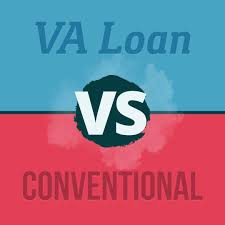
This article will explain how to calculate PMI for tax purposes. PMI can be used to insure your mortgage. It is tax-deductible. Your payment will depend on how much of the total loan you have. This means that the lower the loan amount, the lower your payment will be. This mortgage insurance must end when your loan balance reaches 78%. This typically happens around the 12th birthday.
Private mortgage insurance with tax-deductible premiums
Private mortgage insurance, which is tax-deductible and is payable by the borrower, is a type that can be used to insure borrowers. This insurance is usually affordable and plays an important role in the mortgage financing system. PrivateMI helps homeowners to keep their mortgage payments down and protect them from loss. PrivateMI is a tax-deductible expense that can be cancelled by the borrower if they have enough equity in their house.
The federal government extended the mortgage insurance premium deduction for borrowers until 2020. Important to know is that this deduction does not apply to private premiums for mortgage insurance. This deduction is no longer available to cash-out refinances or home equity loans. To qualify, a borrower needs to itemize their taxes. On mortgages that have been in place for three years or more, the borrower pays mortgage insurance premiums.

LTV
These are the basics of how PMI is calculated. First, the amount of PMI that you are required to pay is determined by your loan-to–value ratio, also known as LTV. LTV stands for the amount of the loan multiplied by the home's actual value. Lenders may refuse to approve your application if the ratio is too high. The lender may request a broker price opinion (BPO) from the broker to confirm the market value of your home and calculate the LTV. You can also ask to terminate your PMI coverage early. BPOs as well as appraisals are normally done at your cost. But, you could save hundreds of bucks by terminating your mortgage coverage early.
Your down payment is another factor that will affect your LTV. Typically, a down payment of 10% will equal a 90% LTV ratio. For example, a 10% downpayment would mean you need to pay at most 80% of the loan's balance to avoid PMI. You will need to pay PMI if your mortgage balance exceeds 80% of its original purchase price. This applies until you reach the 15-year mark.
Calculating PMI
The data from soil chemistry can be used for the calculation of the PMI. Such analysis can help in medical-legal cases as well as in humanitarian recovery. The confidence intervals determine the accuracy of a result. These should be within 95% the nominal value. The accuracy of the calculation depends on several factors, including the cause, coverage ratio, and the confidence interval.
PMI is an additional type of insurance. This insurance is necessary for borrowers with insufficient funds to cover all costs of the loan. This additional insurance may lower the risk of some mortgages depending on how high the loan-to–value ratio is.

Retire from paying PMI
There are several ways to get out of paying PMI on a mortgage. One way is to get your loan-to-value ratio down to 80% or less. You'll need to make timely mortgage payments and prove that your home is free from any other liens. Information about how to cancel PMI is also available in the Homeowners Protection Act.
Another option is paying at least 20% down. By doing this, you can avoid having to pay PMI for a longer duration. Some of these methods are simpler than others. However, it may take some time to complete them all.
FAQ
What are the top three factors in buying a home?
The three main factors in any home purchase are location, price, size. Location refers the area you desire to live. Price is the price you're willing pay for the property. Size refers to the space that you need.
Can I buy my house without a down payment
Yes! Yes! There are many programs that make it possible for people with low incomes to buy a house. These programs include FHA loans, VA loans. USDA loans and conventional mortgages. Visit our website for more information.
How much does it cost to replace windows?
Windows replacement can be as expensive as $1,500-$3,000 each. The cost to replace all your windows depends on their size, style and brand.
What are the benefits of a fixed-rate mortgage?
Fixed-rate mortgages allow you to lock in the interest rate throughout the loan's term. You won't need to worry about rising interest rates. Fixed-rate loans come with lower payments as they are locked in for a specified term.
How much money can I get to buy my house?
The number of days your home has been on market and its condition can have an impact on how much it sells. Zillow.com reports that the average selling price of a US home is $203,000. This
What should I be looking for in a mortgage agent?
People who aren't eligible for traditional mortgages can be helped by a mortgage broker. They compare deals from different lenders in order to find the best deal for their clients. This service is offered by some brokers at a charge. Others offer no cost services.
Statistics
- Some experts hypothesize that rates will hit five percent by the second half of 2018, but there has been no official confirmation one way or the other. (fortunebuilders.com)
- This seems to be a more popular trend as the U.S. Census Bureau reports the homeownership rate was around 65% last year. (fortunebuilders.com)
- The FHA sets its desirable debt-to-income ratio at 43%. (fortunebuilders.com)
- 10 years ago, homeownership was nearly 70%. (fortunebuilders.com)
- Based on your credit scores and other financial details, your lender offers you a 3.5% interest rate on loan. (investopedia.com)
External Links
How To
How to Find an Apartment
Finding an apartment is the first step when moving into a new city. This involves planning and research. This involves researching neighborhoods, looking at reviews and calling people. There are many ways to do this, but some are easier than others. These are the steps to follow before you rent an apartment.
-
Researching neighborhoods involves gathering data online and offline. Websites such as Yelp. Zillow. Trulia.com and Realtor.com are some examples of online resources. Online sources include local newspapers and real estate agents as well as landlords and friends.
-
Review the area where you would like to live. Yelp. TripAdvisor. Amazon.com all have detailed reviews on houses and apartments. You may also read local newspaper articles and check out your local library.
-
To get more information on the area, call people who have lived in it. Ask them what they liked and didn't like about the place. Also, ask if anyone has any recommendations for good places to live.
-
Check out the rent prices for the areas that interest you. Renting somewhere less expensive is a good option if you expect to spend most of your money eating out. However, if you intend to spend a lot of money on entertainment then it might be worth considering living in a more costly location.
-
Learn more about the apartment community you are interested in. How big is the apartment complex? What is the cost of it? Is the facility pet-friendly? What amenities does it offer? Are you able to park in the vicinity? Do you have any special rules applicable to tenants?